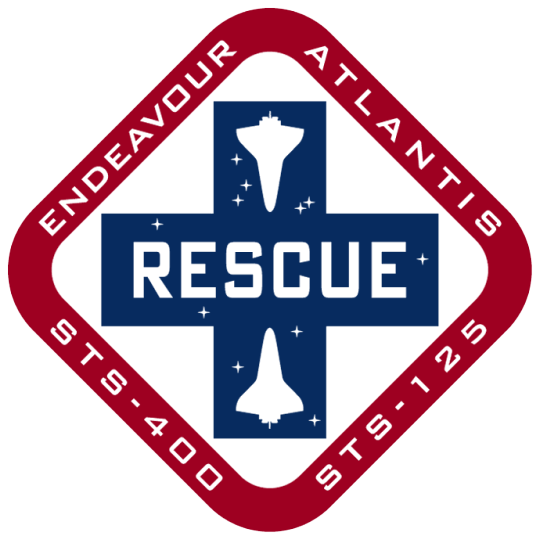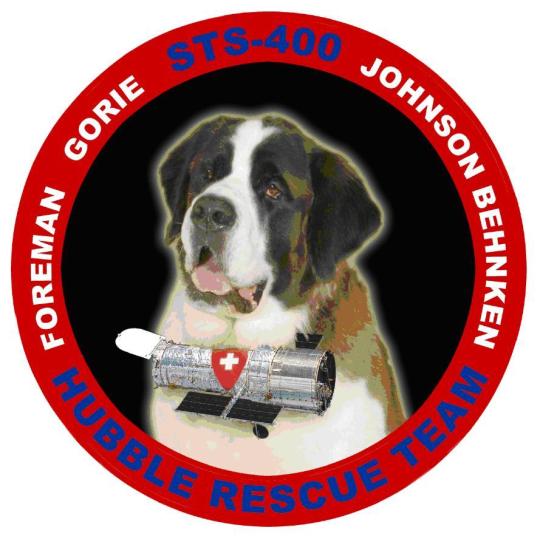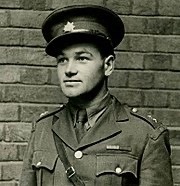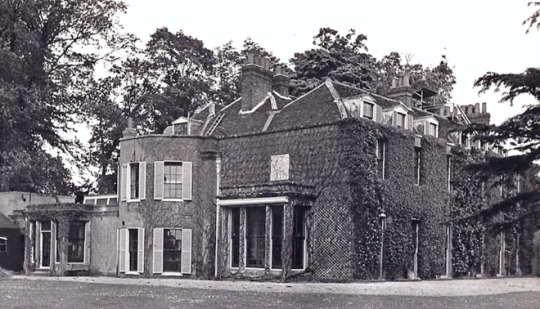#wikipedia-service-station
Explore tagged Tumblr posts
Text
How to clean up a Wikipedia article (advanced edition)
Another editor went through a bunch of Romanian synagogue articles and updated the religious affiliation to "Neolog Judaism" which is a denomination that's mainly found only in Hungary. I can't prove that it's wrong, but I also can't prove that it's true, and I air on the side of caution. In the process of correcting these edits, I am now giving a thorough once-over to the articles. And here we come to the Gherla Synagogue.
Problems
The before
Small: spelling mistakes like 'fund raising' -> fundraising, missing punctuation, lack of Wikilinks to pertinent topics like Yad VaShem, WIZO, mikvah, etc., no caption on the picture (it's the synagogue AND the neighbouring Holocaust memorial!)
Medium: organizationally, this is a clusterfuck. It's not an article about the Gherla synagogue itself so much as a jumble of facts about the Jewish community of Gherla in loose chronological order. The founding of Gherla by Armenians in the 1700s is not pertinent to the synagogue and this should be either removed or include a 'main article' template to the town of Gherla itself.
Large: this text is taken, largely verbatim, from the reference 'About Us The Jewish Community of Gherla, A Short History'; while it's great to have a reference like this, this is a) an unverified blog and b) one very large copyright violation. There's a disproportionate text:references ratio that is made worse by so much of the text coming whole-cloth from this Weebly blog.
Solutions
The after
Small: copy edit for small mistakes like the ones listed above, linkage to pertinent topics. This actually added an enormous amount of time to the work because I went through and checked out some of these like WIZO and that article was a mess + led me to articles like Julia Batino, which was (get this) also a mess.
Medium: reorganize the entire article. Add a 'main article' template that directs to the town of Gherla, which needs work itself. Dig up 9 new references for the Jewish community of Gherla; unfortunately relatively little is specific to the synagogue, i.e. who designed it!
Large: oh wow. A lot of this info can't be verified by independent sources and, strictly speaking, should be deleted. I also found a lot of information that contradicted what had been copy-pasted from the blog, i.e. that there were no Jews in Gherla prior to the 1830s (the town council expelled all Jews from at least one neighbourhood in Gherla in 1811 so...someone had to be there to be expelled; this inaccuracy has been repeated A LOT on Instagram, unfortunately). The Hungarian name for the town, Szamosújvár, is also used frequently in both the scholarly and religious literature, i.e. the Rebbe of Szamosújvár. A lot of this literature is also, no surprise, in Hungarian/Romanian/Yiddish, so that's largely inaccessible to me beyond what Google Translate can manage.
Methods
This shit is hard sometimes! There a lot of bullshit to wade through. I have institutional library access through my work so going through search terms like Gherla/Szamosújvár synagogue (and then repeating that in Hungarian) on Google Scholar and Google Books was productive. There were a few articles from Holocaust memorial publications/encyclopedias that had pertinent background information of the Jewish community in Gherla, but many individual topics, i.e. the name of the president of the congregation (which one!) can't be confirmed anywhere that I could find. Something that also makes it difficult is spelling/transliteration across languages. For example, Jakov Dov Feldmann could easily be Yaakov Dov Feldman, Avraham Shlomo Elias romanized as Avrohom, Rabbi Yitzhak Yosef ha-Kohen ha-Kohen as Rabbi HaKohen, Kohen, Cohen, Coen, etc.
Summary
This took a while but was really interesting so that's fine. I didn't want to remove the information about the Gherla/Szamosújvár community but I didn't want to leave it at just what was from a blog so I added to it which ended up getting...messy (the president of the ghetto's Judenrat [Jewish council] was the father-in-law of Rezső Kasztner who made a deal with the SS to get Jews out of Hungary and was assassinated in 1957 for this, among other reasons). It also opened up a lot of questions about some of the related articles, i.e. the newspaper Uj Kelet so that might be my next project. All told, while editing this article, I went through and edited 8 other articles while working on this one.
7 notes
·
View notes
Text
hey @catsarehumanstoo, how dare you leave incredible addition this in the notes:

if you've ever used the London Underground you might have noticed that it often gets uncomfortably hot. the reason for this is actually that its builders dug too greedily & too deep and as a result the trains are very close to the fires of hell. hope that helps.
#technically most the heat would probably come from the heat of equipment in the tunnels#(like the brakes and the engines on the trains and lights and whatnot in the stations)#especially if- wait‚ did the tube use steam when it was first built?#that sounds stupid as shit to use steam trains in an underground railway#but never put it past the victorians to do incredible levels of stupid shit#okay quick wikipediaing later: yes portions of the tube *did* run steam‚ but only the shallow tunnels in like the central circle routes etc#idk exactly what lines on the modern day map or how much of those tunnels are still in service ive been to london like once in my life okay
64K notes
·
View notes
Text
Fic Idea
Post 8x05
Bobby's acting strangely—not overtly, but just enough that everyone is side-eyeing each other. Buck decides to hang back after his shift one morning and catches Bobby still in his office. He asks him what's up, and Bobby admits that even though Gerrard is gone, that doesn't mean the budget cuts also went away. The good news is that with union pushback, instead of firing someone, they've agreed to rotating month-long furloughs, effective Nov 1st.
Buck immediately volunteers for A shift. He'll do Nov and Dec. Bobby says he can't let Buck sacrifice that much of his paycheck. Buck tells him he's got enough stocked away for a couple of months and that he wants to do this. It might even be good for him.
The first month is really good. Tommy works 48/96, so they get four full days off together and it's amazing. They had a mini vacation in Palm Springs where they went stargazing, hung out by the pool, and spent a day in Joshua Tree.
Buck gets in a lot of reading and knocks down his sizable tbr. He fills in as a sitter for Jee-Yun and enjoys the hell out of spending time with his niece (never mind her deep disappoint on the days Tommy isn't there too). He also gives himself a full day of doing nothing but scrolling his phone. He jumps from one Wikipedia article to another and explores exceedingly niche substacks.
And he still gets 118 time. At least once a week he goes in and cooks a filling lunch for them. He does it at the 217 too, where they sing his praises. He even spent two days being a firefighter when Chim came down with a cold. All in all his month off was pretty amazing, and he figures December would be a piece of cake. He's so sure that he tells Bobby he'll take January too.
Except it stops being a piece of cake. Two days in and he's already restless. It doesn't help when Tommy, Chim, and Eddie show up and tell him how they worked together for a rooftop rescue at Nakatomi Tower. Buck doesn't know the building and asks where it's located. The guys are dumbfounded. "Like, Die Hard, man," Eddie tells him. "Come out to the coast, we'll get together, have a few laughs?" Tommy says hopefully. "Die Hard...Yippee-ki-yay, motherfucker?" Chimney prods. "Oh, yeah," Buck says, having it all click together.
After that his aimlessness really takes hold. He keeps himself busy by feeding the 217 breakfast, lunch, and dinner on the days Tommy works. On his second day, one of Tommy's crew tells him, "You know, you should start taking orders. Make some money since they won't let you fight fires.
Buck's surprised at how fast the idea takes hold. He spends all four of his days with Tommy talking about it. He feels like he's vibrating out of his skin, and he falls just a little more in love with Tommy when he tells Buck that his idea is not only good, but that he knows a guy who can help make it happen.
Buck next goes to his team and explains his idea. He's going to open a sandwich service. Nearby fire stations will send in orders the day before, the sandwiches will be made the next morning, and delivered throughout the afternoon. Tommy has a friend who will rent out commercial kitchen space to him, and the employees will be fellow furloughed firefighters. They wouldn't be making the same pay, but they would be making something instead of draining out their savings like Buck. Eddie's all in, but Hen and Chim are a little more hesitant. Whether they come around or not, that's okay. Buck plans on starting small and thinks he can do it with three or four people, and he has multiple firehouses to pull from. But he knows his biggest hurdle is coming up with the start-up cash.
He toys with the idea of asking his parents for a loan. They were willing to fork over money for Chim and Maddie's down payment, and they swear up and down they want to make amends, so if Buck needs to use guilt to get a cut, he will. Before he can work up the nerve to ask, Tommy hands him a card and calls it an early Christmas present. Inside is a check for 10k. Buck's floored and misty eyed. He asks how and why and are you sure? Tommy pulls him in and tells Buck that he's sure. That he believes in Buck and wants to do whatever he can to help him succeed. Including making sandwiches.
And that's it. That's all I've got. Purged from the system.
#tevan#bucktommy#kinley#buck x tommy#tommy kinard#evan buckley#bucktommy ficlet#ficlet#tevan ficlet#something dumb i needed to get out of my head#fanfic idea
83 notes
·
View notes
Text

Flinders Street Railway Station, Melbourne, Australia: Flinders Street railway station is a train station located on the corner of Flinders and Swanston streets in Melbourne, Victoria, Australia. It is the busiest train station in Victoria, serving the entire metropolitan rail network, 15 tram routes travelling to and from the city, as well as some country and regional V/Line services to eastern Victoria. Wikipedia
128 notes
·
View notes
Text
One Lincoln Park, Denver, Colorado, United States: One Lincoln Park is a residential tower in Denver, reaching 31 stories and 360 feet and is one of Denver’s tallest buildings. The building sits at the edge of the downtown grid and is bounded by Welton St, 20th St, Lincoln St, and 20th Ave. It is at the 20th & Welton station which services RTD’s light rail L Line. Wikipedia
62 notes
·
View notes
Text

Flinders Street Railway Station, Melbourne, Australia: Flinders Street railway station is a train station located on the corner of Flinders and Swanston streets in Melbourne, Victoria, Australia. It is the busiest train station in Victoria, serving the entire metropolitan rail network, 15 tram routes travelling to and from the city, as well as some country and regional V/Line services to eastern Victoria. Wikipedia
99 notes
·
View notes
Text
I am so fucking pissed. We’re hearing forecasts that we might get FIVE FUCKING INCHES OF SNOW overnight from Monday to Tuesday. In ALABAMA, where we have no snow removal equipment. Like I think we got one bag of sand for the whole town. No snow tires, I don’t even know what those are. This isn’t cute “Haha it’s just barely below freezing! Snowball fight!!!” snow. This is 14° Fuck (-11° Come the Fuck On) snow. FIVE INCHES? We get flurries and the city descends into madness.
What if we lose POWER. Everything runs off USB cord stuck in the outlet charging nowadays. This is why everyone used to run out and buy Milk Bread Batteries. Listen. I have this memory of the power going out during this wild snowstorm when I was a kid--I want to say it was Winter Storm '93. Ask anyone who lived in Alabama at the time. Like we had Desert Storm '92 the military operation one year and Winter Storm '93 the next. It was that serious in our minds, and I'm not sure you can blame us:
The storm dumped several inches of snow each hour on Birmingham, which ended up with officially 13 inches of snow.
Due to the high winds some parts of Birmingham reported drifts 5 to 6 feet deep. One state trooper reported that the roads were in the worst shape he had ever seen. "People can't tell what's road and what's not."
Low temperatures during the storm were in the 5-to-10 degree range on that Sunday.
IN A TOWN WHERE WE DON'T KNOW WHAT A SNOW PLOW IS. I think we had one for the entire county. Like I'm only kind of joking here.
And our power went out.
The snow was so heavy that it pulled down power lines either by its own weight, or by the tree branches its weight broke off. Meanwhile, the power at my house already went off every time a squirrel sneezed. I don't how many days this lasted; it was probably like, 2-3 days, but in my head, I was 14 years old boxed up with my family with no heat and it lasted two weeks. Maybe three years. The four of us slept in sleeping bags layered with quilts, huddled on the floor around a wood burning fire. (In the haunted house, no less.) The carpet was really nice, at least. We had a--do people still call them boomboxes? A big portable cassette player--battery-powered--with AM/FM radio. We listened to whatever TV shows were broadcast from the ABC station at night. We did have hot water; I took a lot of hot baths. We cooked food over the outdoor grill (which we moved to the comfortably large area under the deck, to hold off the falling snow), sometimes using aluminum foil as a kind of thin impromptu frying pan, and kept perishables like milk and meat in a cooler. Oh, did we have a bag of ice for the cooler? No, we used snow. God knows there was enough of it. Of course, I'm sure the refrigerator was perfectly serviceable even without power, because it was TEN DEGREES FUCK ALL.
I remember going outside a good bit and playing, as much as a teenager plays, in the snow with my seven-year-old sister. I remember that all the neighborhood kids got big rubber trashcan lids and used them as toboggans, going up to the top of the hill on our street and pretty successfully sledding down. Maybe it was "lmao snowball fight!!" snow when I was 14. I'm 45 now, and the cold makes me hurt. It makes me hurt all over. Maybe Winter Storm '24 will be a fun core memory for my nephew. I am pissed. And also charging all my electronics.
(ETA: It’s ‘24 now, isn’t it. My brain hasn’t clicked the date over yet. What is time.)
102 notes
·
View notes
Text
Shufflemancy 101: A Brief History & Analysis
Hey! If you like my work and want to support me in my quest for divination theory, digital tools, algorithmic quandries, and research into niche divination tools, consider throwing dollars at my Ko-Fi tip jar! Every contribution helps me keep making posts like this one. (You can also read this post over on Ko-Fi!)
The difficulty with researching something like shufflemancy is that it's a relatively modern phenomenon. I haven't yet found anyone (online or in a book) specifically talking about the origins of shufflemancy as a term or where it might've come from.
So, we start from square one.
What is Shufflemancy?
According to Wikipedia, shufflemancy is divination "by the use of an electronic media player such as an electronic playlist, iPod, or other medium wherein one skips a certain number of songs and the lyrics and/or tune of the song is the answer to the divinatory question."
Simple enough. Use an electronic collection of music that's been shuffled to divine.
This did lead me to the question: What counts as shufflemancy? Does tuning into a radio station count?
It's my opinion that radio divination does not count. There's no shuffle function. Yes, it has an element of chance, and that's what makes it divination. It certainly falls under the wider umbrella of divination via music, too. But it isn't shufflemancy if it doesn't make use of a shuffle function.
So, to make things simple, for something to be shufflemancy, it must:
Use an electronic medium
Involve a randomized shuffle function
Be something the shufflemancer can interpret to answer a question (pretty much anything)
Early Shufflemancy
The earliest form of shufflemancy as we understand it today, using the above requirements, would probably be tape players capable of shuffling music. With the nature of tape, it would take a while for the thing to wind and rewind to find the cue on the tape which signaled the start or end of a song, but it'd work.
With that said, shuffling as we understand and recognize it today would've started with CDs in the 1980s. There were CD players that could hold three to five disks at a time. They could shuffle songs between all disks held in the player, creating a random mix of tunes for listeners to enjoy.
Using either of these methods for divination would work, technically. The results would be somewhat limited, but that doesn't mean it's a bad method to use. Especially if your CD player could hold 5 disks, you could easily put in 5 albums from different artists with all different vibes for a wider variety of outputs.
I certainly remember using my little blue radio that held two CDs at once like this. I'd put in two albums and hit shuffle, and the first song that played would be my vibe and advice for the day. It was divination -- some of the earliest I'd ever done consciously, at the young age of nine. And when I got the bigger one that held three CDs? Game changer.
So this puts shufflemancy's origins somewhere around the mid-to-late 1980s, when Sony put out the first CD player with shuffle. As we moved into the 1990s, CDs became more popular and cassettes faced obsolescence.
The Shuffle Revolution & Early Modern Shufflemancy
In 2005, Apple changed the game again. It had already debuted the iPod in 2001, providing an easy, pocket-sized music experience as a direct challenge to the CD's cultural domination. On January 11, 2005, nearly 20 years ago, Apple announced the iPod Shuffle.
And oh, boy, did it change everything.
I could talk forever about the iPod's impact on the music industry, the death of the in-order album, and the eventual rise of music streaming services. But others have done that to death, so I'll focus in on our topic of shufflemancy.
This is where we start seeing shuffling music as it is now, in the modern day. In my digging, I found mentions of the term "shufflemancy" as early as 2007 -- just two years after the iPod Shuffle was announced. Someone proposed the concept and terminology of "shufflemancy" as we understand it today on a Halfbakery Forum "Idea" post on October 3, 2007.
It's difficult to say whether this is the first instance of the term. In reality, shufflemancy seems to have emerged as a natural by-product of the evolution of music technology. Where there is innovation, witches and diviners will mold it to their purposes. We're a resourceful bunch like that. It grew organically as we moved from buying albums to buying singles to streaming music without buying at all.
People were offering public shufflemancy readings as early as 2009 in places like TarotForum.net. It's spoken about during this era as a "silly" and "new" form of divination that people were trying out. There aren't any dates in that link, but according to the website's data, the first post in the thread was published on June 16, 2009.
From there, shufflemancy saw a gradual rise in popularity. It evolved from using iPods to iTunes, Napster, and eventually Spotify as these new applications emerged.
Shufflemancy Now
If you look up "shufflemancy" using Spotify's search function, you'll receive dozens of results. Many of the top playlists are public ones curated by shufflemancers for themselves and others to use. Options range from general playlists to "mega mixes" containing upwards of 200 hours of music from all different genres, artists, and eras. There are some with a paltry five hours of music, while one that I've seen goes up over the 600 hour mark. (If I can find that one again, I'll reblog it, because... damn.)
Select a "messages from your guides" option from the search or curate your own -- the choice is yours. For one-time shufflemancers, using a pre-made option may be the best, most economical choice. But dedicated shufflemancers sometimes boast multiple hundred-hour playlists for different purposes, all personally curated.
Clearly, it's popular. There are shufflemancers on Tumblr and Etsy offering free and paid services using their specially curated playlists. A quick search is all you need to find someone receiving a divinatory reading via song lyrics, meanings, and vibes. And it seems to work -- sellers on Etsy boast hundreds of positive reviews. Some even offer playlist curation services for personal shufflemancy or messages from deities and/or spirits.
It all begs the question, how does shufflemancy work?
Shufflemancy Methodology
Finding this is significantly easier than pinning down the history of shufflemancy. This post from Tumblr user orriculum, sums it up fairly well. So does this one by the-daily-diviner.
To do shufflemancy, the basic steps are:
Create or find a playlist of songs. A large collection seems to be the most favorable option for a wide spread of possibilities.
Ask a question. Divination 101 -- figure out what you want to know and ask it. Simple enough.
Pick a number. Choose any number and shuffle that many times or skip that many songs.
Listen to the song. Write down lyrics that stick out, messages that come through, and anything else that seems relevant (genre, tempo, vibe, etc.)
Interpret. Take the information gathered during the song and use it to draw conclusions, just like any other form of divination.
Simple enough. Shufflemancy is the sort of method that requires a high level of intuitive thinking. It's very mutable and suits a good amount of personalization.
This is both good and bad, I think. It would be incredibly easy to create a bias in your shufflemancy playlists by selecting songs with primarily one genre, artist, album, emotion, or through-line. The ideal playlist really does have a wide variety of music, and this means selecting songs that the shufflemancer doesn't necessarily like. We all have a genre or artist we hate; excluding an entire genre skews results. Impartial selections of music are critical to the success of good divination. Otherwise, we risk interfering with the outcome.
And speaking of interfering...
The Algorithm Problem
(Note: I'm focusing in on Spotify since it's very commonly used and because it's accessible to me. Shufflemancy can be (and is!) done with plenty of other apps like Apple Music.)
When Spotify was originally launched, it used a version of the Fisher-Yates Shuffle to perform its shuffling of music. In essence, this algorithm takes a finite sequence of data, picks an option from that selection of data, and removes it from the pool. Then, it picks another and another until no more options remain.
At first glance, this seems great! It creates a fairly random output. But as is the nature of randomness, there were clusters. The same artist would play four or five times in a row from a large playlist, and Spotify users complained. It was random, but it didn't feel that way.
The human brain is wired to find connections and patterns. When the same artist plays over and over again despite a playlist being on shuffle mode, it creates a pattern that the brain recognizes. Therefore, the "true" randomness of clustering outputs was unsatisfactory.
So, in 2014, Spotify updated it. Their new algorithm would detect and remember the song it just played and, in shuffling, account for the artist and album to provide a more random-feeling result. The new algorithm detects what's already played and selects accordingly to prevent the same artist from playing twice in a row, just as it prevents the same song from playing twice. It spreads artists out evenly (though not perfectly, to maintain the illusion of randomness) to provide an enhanced listening experience.
What does this mean for shufflemancy, then? If Spotify's algorithm is interfering in the output provided from a playlist, does that mean it's not a reliable form of divination?
At first, I wasn't so sure. I adjusted my thinking -- if a tarot app was preventing certain cards from being drawn (or from being drawn in a particular order) because I'd already drawn them that day or week, would that render the app unreliable? And the answer was yes. It would! It removes the random element from the method, therefore making it not true divination by my definition.
So shufflemancy with Spotify isn't (good) divination, then. Right?
My Opinion & Theory
In thinking about this further, I think it comes down to personal opinion. People certainly have success with shufflemancy via Spotify, or else they wouldn't do it. They definitely wouldn't offer their services (free or otherwise) if they weren't confident in the results it provides.
Thinking that way, I believe there's a way to off-set the algorithm's interference. With enough songs in a playlist, the random element is enhanced despite the algorithm. Not by having the same song multiple times (Spotify would surely detect this and prevent it from playing), but perhaps the same song covered by different artists. Songs with the same vibe, the same meaning, similar lyrics... AND songs from a wide variety of artists and genres, regardless of whether the shufflemancer likes the songs or not.
The person with that 600+ hour playlist for shufflemancy has it right, I think. That's the key. Variety and volume to make up for Spotify's algorithmic shuffler.
Additionally, in listening to my many, many Spotify playlists, I noticed something. If I'm listening to a playlist on shuffle and decide I want a specific song, I can choose to play it immediately. Afterwards, songs I've already heard might play. It seems as though doing this resets the shuffling algorithm in some way. Doing this in combination with a large and varied playlist might be the key to making shufflemancy in Spotify truly, fully reliable.
My Next Steps
Obviously, scholarly research only goes so far in situations like this. In order to properly gauge the accuracy of shufflemancy, I'll have to do it myself.
First, I'll need a playlist. I have a handful of playlists that sit in the hundred-hour range, but they're curated with friends for specific vibes. They're not really suitable for shufflemancy. So making one for myself is step one. I'll use premade playlists as a springboard for ideas, but the end result will be my own. For transparency, I'll make the playlist public and share it as part of the next edition in this series of posts.
The next step is to just... do it. Do the divinations, and do them regularly. Instead of a daily tarot card, I'll do a daily shuffle. I'll form "spreads" and put together a more in-depth methodology that fits my style as it develops.
Then, finally, maybe public ones? For reviews and feedback, obviously. It's one thing to do divination for myself -- confirmation bias and all -- but to do it for others and to be open for immediate feedback is entirely different.
Last, it's a matter of compiling my findings into a coherent document. Easier said than done, but done it must be.
Resources
I pulled from a lot of places for this one. Massive thanks to the Crossroads Discord for listening to me yell about divination for the last several weeks. It will continue.
In any case, here are all the resources I referenced for this leg of research:
Wikipedia - The Fisher-Yates Shuffle
Wikipedia - Methods of Divination
Wikipedia - The iPod Shuffle
PopSci - History of Shuffling Music
Engineering at Spotify - How to Shuffle?
The Verge - The Mixed-Up History of the Shuffle Button
Auntie PanPan (YouTube) - Shufflemancy - What IS It?!?
Halfbakery - Shufflemancy Idea Post
Fox and Faith Wordpress - Radio Divination and Intentional Living in Your Day to Day
Scientific American - How Randomness Rules Our World and Why We Cannot See It
PC World - The CD Player Turns 30
Make Use Of - How Spotify's Shuffle Feature Really Works
Orriculum on Tumblr - Post on shufflemancy technique
The-Daily-Divinre on Tumblr - Post on shufflemancy technique
Empirical Zeal - What Does Randomness Look Like?
#aese speaks#digital divination#divination#divination algorithms#shufflemancy#shufflemancy 101#witchcraft#research#history of magic#history of divination#history of shufflemancy#witchblr#witch#divination witch#witchcraft community#divination community#discussion#witchy discussion#divination resources#shufflemancy readings#divination 101#ok im done tagging. for fucks sakes this is a beast of a thing.#please reblog this & add your thoughts#i crave feedback
136 notes
·
View notes
Text
Ok so I just found something weird about Ryan and Thomas' classes…
I was looking into the LB&SCR E2s and GNR N2s because I wanted to write some fanfiction with Thomas and Ryan. As I was reading some Wikipedia articles, something caught my eye, and that was the difference in Traction Effort.
In simplest terms, Traction Effort is basically the amount of pushing and shoving forces that an engine has. The higher the number, the more the engine can pull and push. It’s measured in both Kilo-Newtons (kN) and in Pounds Force (Ibf). 1 kN is equivalent to 22.8 Ibf. There is a way to calculate an engine’s Traction Effort but the formula is super complex even in its simplified form and I suck at math. If anyone wants to double check this, be my guest.
So, according to Wikipedia and its subsequent sources, Ryan’s traction effort is 19,945 lbf (88.72 kN). Thomas, meanwhile, has 21,397 lbf (94.78 kN).
If this is accurate to both the E2s and the N2s, then that means that Thomas had nothing to worry about. Thomas is, at least from a traction effort standpoint, the better engine. Yes, there are other factors when determining which engine is better, but Thomas beats Ryan in one of the most important factors, that being how much he can pull and push.
“So Thomas was jealous for no reason? We already knew that, so what’s the point?" Well dear reader, you’d be half right. See, here’s where things get interesting.
I’m sure we all know that the E2s sucked at their job. They were too big to work on the lines they were meant for and had a plethora of other issues. Their small bunkers made them unfit for long distances, and the Second Series (the ones with the extended side tanks that were supposed to replace the first) had an inadequate water supply. Due to these issues, they didn’t last long and they were all withdrawn and scrapped between 1961 and 1963.
What I bet you’d probably figured out by now is that Ryan’s class faired far better than Thomas’ class. While most were withdrawn much sooner than Thomas’ (from 1955 and 1962), they were frequently used and considered reliable. Most of Ryan’s siblings worked at Kings Cross and Moorgate as suburban passenger services, meanwhile the E2s were kept mostly at docks and yards at London Bridge Stations and Victoria and hardly did anything but shunt. On top of all of this, Ryan's class had a much better fuel and water capacity.
Now take all of this info and place it in context of SLOTLT.
Imagine a SLOTLT movie that shows us that Thomas is insecure about his faults despite his numerous rebuilds. Then in comes this fancy new GNR engine that, while slightly weaker than Thomas, can travel farther thus can deliver more trains across Sodor. Now have that same engine show off this ability on Thomas' own branchline. On top of all of that, have everyone brag and comment on how better Ryan is as a passenger train than Thomas. Cut back to Thomas at the construction site hearing about this, and becoming furious (but moreso scared) about Ryan and becomes convinced he's being replaced.
Now imagine Ryan being the one to pull the shipwreck instead of Donald and Douglas. Now Thomas is convinced he's being replaced and either sent away to another railway or sold for scrap.
It's a small fix but it makes such a difference. It helps explain why Thomas becomes so reckless and irritable in the movie and when Sailor John rolls in with Skiff, he feels more willing to help him since "Hey, he bought Skiff, maybe he can buy me if I prove myself to him!"
There are so many other stories we can write using all of this, and you all know damn well I'm gonna abuse the hell out of this lol.
38 notes
·
View notes
Text
In 1990, a disgruntled employee at the Point Lepreau Nuclear Generating Station in Canada obtained a sample (estimated as about a "half cup") of heavy water from the primary heat transport loop of the nuclear reactor, and loaded it into a cafeteria drink dispenser. Eight employees drank some of the contaminated water. The incident was discovered when employees began leaving bioassay urine samples with elevated tritium levels. The quantity of heavy water involved was far below levels that could induce heavy water toxicity, but several employees received elevated radiation doses from tritium and neutron-activated chemicals in the water.[60] This was not an incident of heavy water poisoning, but rather radiation poisoning from other isotopes in the heavy water.
Some news services were not careful to distinguish these points, and some of the public were left with the impression that heavy water is normally radioactive and more severely toxic than it actually is. Even if pure heavy water had been used in the water cooler indefinitely, it is not likely the incident would have been detected or caused harm, since no employee would be expected to get much more than 25% of their daily drinking water from such a source.[61]
12 notes
·
View notes
Text
How to clean up a Wikipedia article
Our example for today will be this article, Great Synagogue (Constanța), a synagogue in Romania that has been abandoned for a number of years. This is what it looked like before I did some work: obvious but smaller issues such as: the ugly lead sentence, the religious affiliation listed in the infobox as 'Ashkenazi Jews' (should be Judaism), lack of spaces between references and the next sentence, opportunities for linking to other articles such as firman and Sultan Abdul Aziz, references breaking up the middle of a sentence; the bigger issue is that there's been no news updates about the building since 2014 so things might have happened that we're unaware of from this reading.

Quick jog to Google and a review of the existing references...

Ta-da!
End result: a noticeably cleaner and clearer article that not only contextualizes the building in its community, but also has a much more recent update on the restoration status, reads more easily, and has less subjective (or in Wikipedia terms, 'POV') language. As a personal note, I make a point to explicitly name people where possible, i.e. the president of the community when the synagogue was built, M. Bujes. When it comes to people who were often deliberately or systematically excluded from historical record, making a mention of them and their actions feels like a grain of sand added to the scales of history.
6 notes
·
View notes
Text










Jasper National Park, AB (No. 2)
Jasper National Park's name originates from Jasper Haws, a Maryland-born fur trader who worked for the North West Company. In 1815, Haws took command of a North West Company trading post, built on Brûlé Lake in 1813, which subsequently became known as Jasper's House. In 1830, the trading post was relocated further up the Athabasca River, just north of Jasper Lake. The site of Jasper House itself was designated a national historic site in 1924.
Jasper House was destroyed in 1910, but it gave its name to both the national park, and the town of Jasper within the Park.
Jasper Forest Park was established by a federal order in council on September 14, 1907. The park's establishment was spurred by plans for the construction of a second Canadian transcontinental railway, which was to cross the Rocky Mountains at Yellowhead Pass; Jasper Park was intended to be developed into an alpine resort in the mould of Rocky Mountains Park, with a train station, tourist hotels, and a service town. Collectively, the mountain parks were intended as a sort of wilderness playground for middle-class workers, an antidote to the malaise of modern life. However, the vision of wilderness on which the development plan depended was at odds with the presence of long-established Métis homesteaders within the boundaries of the park, many of whom were descended from the white and Haudenosaunee fur traders and trappers employed by the North West Company and the Hudson's Bay Company in the 19th century. In 1909, six Métis families were declared squatters, paid compensation for improvements made to the land, including buildings, ditches, and fences, and ordered to leave the park.
Source: Wikipedia
#Roche Ronde#Alberta#Rocky Mountains#Northern Rockies#Alberta's Rockies#travel#original photography#vacation#tourist attraction#landmark#landscape#summer 2023#Canada#woods#forest#reflection#flora#nature#countryside#fir#pine#Jasper National Park#Athabasca River#UNESCO World Heritage Site#Yellowhead Highway#Pyramid Mountain
22 notes
·
View notes
Text
STS-400: The planned (if needed) rescue of STS-125

Unofficial crew patch *

On LC-39A STS-125 Atlantis (left) and on LC-39B is STS-400 Endeavour (right).
In the wake of the Columbia Tragedy, NASA prepared several contingency missions in the event a shuttle could not return safely. Most of the shuttle missions post STS-107, involved the construction/support of the International Space Station. If there were any instances where the shuttle was deemed unfit to return safely, the crew would stay on the ISS until a relief shuttle could be sent. However, STS-125 Atlantis was to service the Hubble Space Telescope and was not on the same orbital plane as the ISS. The Atlantis wouldn't have enough fuel to reach the station, so another Shuttle (Endeavour) was kept on standby on LC-39B. STS-400 would have been crewed by Christopher Ferguson, Eric A. Boe, Robert S. Kimbrough and Stephen G. Bowen.

On the first day, the crew of Atlantis would use the Canadarm to inspect the bottom of the shuttle for damage to the Thermal Protection System. Had there been any damage deemed unrepairable, the plan was to launch Endeavour 5 days later. Atlantis would be put into powered-down mode to conserve power and consumables.


Endeavour will have Altitude Control with Atlantis serving as a Micro-Meteoroid Orbiting Debris shield.
"On flight day two, Endeavour would have performed the rendezvous and grapple with Atlantis."



Crew locations during EVA-1
"On flight day three, the first EVA would have been performed. During the first EVA, Megan McArthur, Andrew Feustel and John Grunsfeld would have set up a tether between the airlocks. They would have also transferred a large size Extravehicular Mobility Unit (EMU) and, after McArthur had repressurized, transferred McArthur's EMU back to Atlantis. Afterwards they would have repressurized on Endeavour, ending flight day two activities."


Crew locations during EVA-2


Crew locations during EVA-3
"The final two EVA were planned for flight day three. During the first, Grunsfeld would have depressurized on Endeavour in order to assist Gregory Johnson and Michael Massimino in transferring an EMU to Atlantis. He and Johnson would then repressurize on Endeavour, and Massimino would have gone back to Atlantis. He, along with Scott Altman and Michael Good would have taken the rest of the equipment and themselves to Endeavour during the final EVA. They would have been standing by in case the RMS system should malfunction. The damaged orbiter would have been commanded by the ground to deorbit and go through landing procedures over the Pacific, with the impact area being north of Hawaii. On flight day five, Endeavour would have had a full heat shield inspection, and land on flight day eight."
Information from Wikipedia link

STS-400 Middeck Seating
The additional crew members on Endeavour would have been accommodated via additional seats installed on the middeck. The autopilot onboard Atlantis would be used to de-orbit the orbiter tail first, to destroy it over a region north of Hawaii, in the Pacific Ocean.

Another unofficial crew patch.

View from LC-39B of the launch of STS-125 Atlantis on May 11, 2009. This was the fifth and final Space Shuttle mission to the Hubble Space Telescope.
Fortunately, STS-400 was not needed and Endeavour was returned to the VAB from LC-39B for STS-127.
* "As a contingency mission, STS-400 was not given official support by NASA for the production of a crew patch or emblem. However this artwork was created for use by the mission team as an unofficial emblem by Mike Okuda [the same person who worked on Star Trek and most of the LCARS], who also illustrated the official patch of STS-125, the flight to be rescued by STS-400."
Date: September 9, 2008
source, source, source, source, source, source, source, source, source, source, source, source, source , source
#STS-400#STS-125#Space Shuttle Atlantis#Atlantis#OV-104#Space Shuttle#Space Shuttle Endeavour#Endeavour#OV-105#Orbiter#NASA#Space Shuttle Program#September#2008#rescue#my post
174 notes
·
View notes
Text
So last night I was reading Wikipedia articles about abandoned NYC subway stations (as one does) and stumbled upon one of the weirdest historical mysteries/conspiracy theories I've ever heard. Buckle in/grab on to the handrail for this:
Unsurprisingly for a 100-year-old, highly complex subway network, there are quite a few abandoned subway stations in NYC. Some of them are famous, like the gorgeous Romanesque Revival City Hall Station, or the Court St station in Brooklyn now in use as the New York Transit Museum. Others are more mundane, like the 18th Street station and the Worth Street station, both of which are disused stations on active subway lines that can be seen out the window of a passing subway car if you're paying attention. But by far the weirdest is the 76th Street station, which may or may not actually exist.
Basically, the IND Fulton Street Line is the line that carries A and C line trains from central Brooklyn to Queens (if you've ever taken an A train from downtown Brooklyn or Lower Manhattan to JFK Airport, that's the one). Just before the Brooklyn/Queens borough line, the line veers slightly north as it changes from a subway under Pitkin Ave (on the Brooklyn side) to an elevated line over Liberty Ave (on the Queens side). But originally, when this line was being extended toward Queens in the late 1940s, the plan was to continue the underground line further into Queens under Pitkin Avenue. Tunnels were dug to the present-day Euclid Ave station and then continued further beneath Pitkin Ave, toward a planned station at 76th Street and Pitkin (just barely over the Queens borough line).
On Nov. 28, 1948, this line is recorded as opening with service to 76th Street station, but almost immediately there was a controversy over whether, when, and how this 76th Street station had actually been built. Some engineers and tracklayers were quoted in the Times as saying they hadn't built anything past the borough line, but maybe someone else had. There was also a story on Dec 2 that quoted a local who noticed a new subway station entrance at 76th and Pitkin that had sprung up seemingly overnight. The Board of Transportation was unable to produce any contracts for construction of this mysterious station, and the line past Euclid Ave to 76th Street is recorded as having closed on Dec 20 after legal threats from unions, which suspected a coverup of non-unionized labor. Thereafter, any reference to the 76th Street station was purged on maps, signs, etc., although the signalboard at the Euclid Ave station evidently still has a taped-over portion which used to show the 76th street station.
Eventually, the line was extended by connecting the subway to the already-existing Fulton Street Elevated line, which is the path used today. A cinderblock wall apparently blocks off the end of the subway tunnel under Pitkin Ave, and a retired transit worker named Steve Krokowski told the NY Times in 2014 that he had tried to dig under the wall and found a track tie but was forced to stop when the hole began to cave in. He also mentioned a retired police officer and other unnamed colleagues who claimed to have seen the fully completed 76th street station, which may or may not have been accessible via a door that may or may not have existed in the cinderblock wall.
The intersection of Pitkin and 76th is now a populated residential area, and it's unlikely that anyone is ever going to excavate it to find the station. As far as anyone can tell, on the surface, there's no evidence (i.e. ventilation tunnels etc.) of a subway station existing beneath Pitkin and 76th. There seems to be one existing picture of the 76th street station from its brief time in service (you can view it here - scroll down almost to the bottom), but despite this, it seems like people are still skeptical that the station exists at all.
Sources/further reading:
-Wikipedia article on Euclid St station, with a section labeled "East of the station"
-Article on the station from Joseph Brennan's page on abandoned NYC subway stations
-NY Times article from 2014 in which Krokowski is quoted
12 notes
·
View notes
Text

Northern Explorer Train, Auckland, New Zealand: Journey from Auckland to Wellington... The Northern Explorer is a long-distance passenger train operated by the Great Journeys New Zealand division of KiwiRail between Auckland and Wellington in the North Island of New Zealand, along the North Island Main Trunk (NIMT). Three services operate per week in each direction between Auckland's The Strand Station and Wellington railway station. Wikipedia
#Northern Explorer Train#Auckland#Journey from Auckland to Wellington#North Island#New Zealand#oceania
84 notes
·
View notes
Text
Alright so I was reading the wikipedia article for the limpet mine because I am Very Normal™ about the antics my favourite characters get up to, and I went down a rabbit hole about this guy who I believe to have somewhat inspired the character of the Captain. (long post warning, TL;DR at the end)
I present to you, Cecil Vandepeer Clarke, the man who helped develop the limpet mine. (the last name Clarke might ring a bell to those who have read There’s A War Going On by Glowinggreeneyes)

Born in 1897, (which could’ve been the Captain’s birth year) he first served in WWI as a second lieutenant. He did quite a few things but the main thing that I want to focus on was his achievements. He was rewarded the Military Cross medal for his part in the battle of Vittorio Veneto in Italy in 1918. If you’ve seen my other infodump post you know that in the Captain’s pilot design, he had the Military Cross (underlined in red) and the Italy Star (underlined in blue) as medals (which later changed). Now, the Italy Star was specifically for WWII but I feel like we can excuse that because of creative licensing and all that. I just think the link between Italy is interesting. The France and Germany Star and the War Medal are part of his canon design, so which ever part of his story that relates to that must’ve made it through the cut which is 👀

Clarke married Dorothy Aileen Kendrick and had three children, which isn’t that important but my brain won’t let go of “a friend of Dorothy” so there’s that.
Clarke developed the limpet mine during WWII with his friend Stuart Macrae. They had to think of a detonation technique (remember, they had to attach the mine to the hull of the ship. You can’t have your frogmen blowing up) they found that an aniseed ball (a type of candy that resembles a gobstopper, only smaller) left by Clarke’s children in his office disintegrated at the perfect rate in water in order to detonate the mine.

While they were testing the limpet mine, they had to make sure it didn’t get damp in any way lest the aniseed ball starts dissolving. So naturally they wrapped it in a condom while not in use.
I initially made this post because the thought of the Captain being all flustered next to Havers while handling a detonator wrapped in a condom was sending me into hysterics but uhhh I got a bit carried away.
The Captain mentions that the limpet mine used suckers to attach to the side of the hull. But in reality they used magnets to attach them to the ship, which was the idea from the start. So tbh I have no idea what he’s going on about.
Now here’s something interesting; Clarke worked on improvements with the limpet mine in a country house called Aston House, which was acquired by the Secret Intelligence Service (SIS) in 1939. The mine was being manufactured by the Special Operations Executive (SOE) and the house was handed over to them by the SIS where it was known as Station XII (hm, oddly close to Button House XI don’t you think?) Clarke also developed many other weapons at the house. Aston House is in Stevenage, Hertfordshire which means literally nothing to me but it might mean something to someone else.

While developing the limpet mine Clarke had come up with the idea of an underground tank (which sounds cool as hell) and proposed his idea twice, the first time to the Ministry of Supply (which was rejected) and the second time directly to Churchill himself (who essentially said “that’s great, but we’re making one of those already”). Although he was put in charge of the “trenching machine” as he was made assistant director in the Naval Land Section, he grew to hate his job and was called for military service shortly after he left. (Hm, who else absolutely despises the navy? Perhaps our favourite little army man?)
Clarke was later promoted to captain (but acted as a major) and was stationed at Brickendonbury Manor (Station XVII) where he trained SOE agents. There he suffered a bone fracture due to a rough landing during parachute training. The wiki article doesn’t mention where the fracture was but if it was in his knees I might punch a wall.
Clarke was released from the army in November of 1945. He returned to Bedford where he joined the Territorial Army as a captain and served there for six years before being transferred to the Intelligence Corps. Later he ran as like a counsellor or something and was part of the Labour/Liberal Party, but I don’t think that’s very relevant. He retired as a major at the age of 60 and died in 1961. The wiki article doesn’t mention a cause of death (which is just poetic irony at this point) but it does mention that he had a non fatal heart attack. But non fatal means he didn’t die from it so ?????
TL;DR:
- Possibly same birth year?
- Similar(ish) medals
- Developed the limpet mine with a close friend
- Stationed at a country house (twice in the case of Clarke) during WWII
- Hate the navy (though that seems to be common amongst soldiers)
- Fucked up bones
- Worked in intelligence and weapons development
- Prominently known as a captain
- Died under mysterious circumstances apparently
I am leaving out A LOT of other information so there might be more connections that I’m missing. If you wanna learn more about Clarke and the limpet mine I found this article which delves further into the development and it was a very fun read.
I… I need to lie down
#mr. willbond I am shaking your hand#like there HAS to be SOME sort of inspiration because if not then this is a horrifying coincidence#I hope the captain also has a silly nickname like ‘nobby’#anyways this took me one late night rabbit hole and three and half hours to make sooooo….#I am so normal about this show#this is what? captain infodump number 57?#bbc ghosts#the captain#bbc ghosts captain#the captain bbc ghosts#oh yeah I’m pulling out all the captain tags for this#long post#tawgo
124 notes
·
View notes